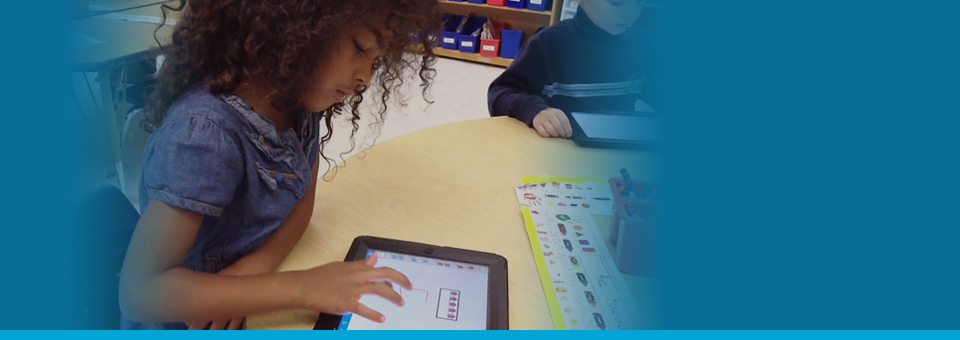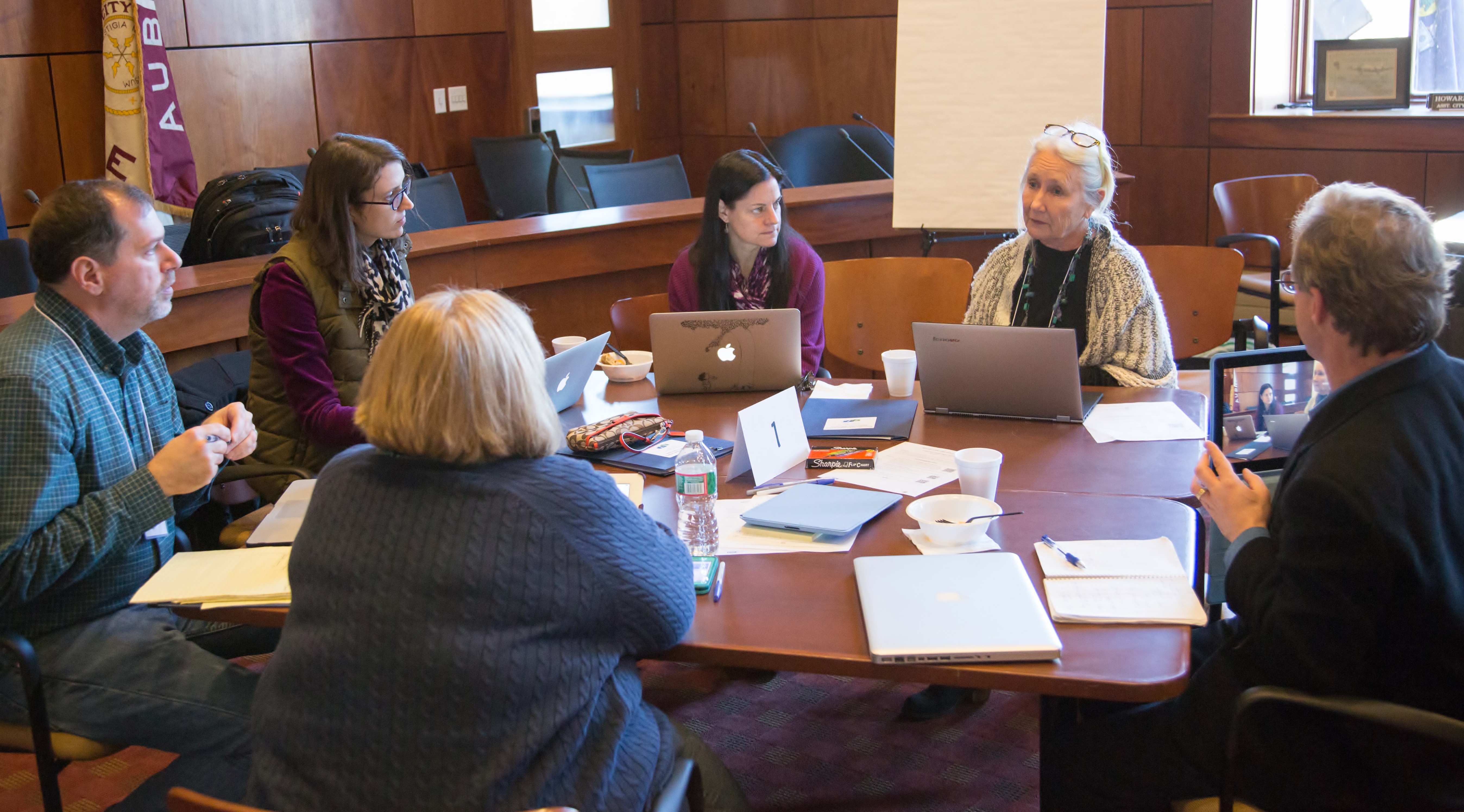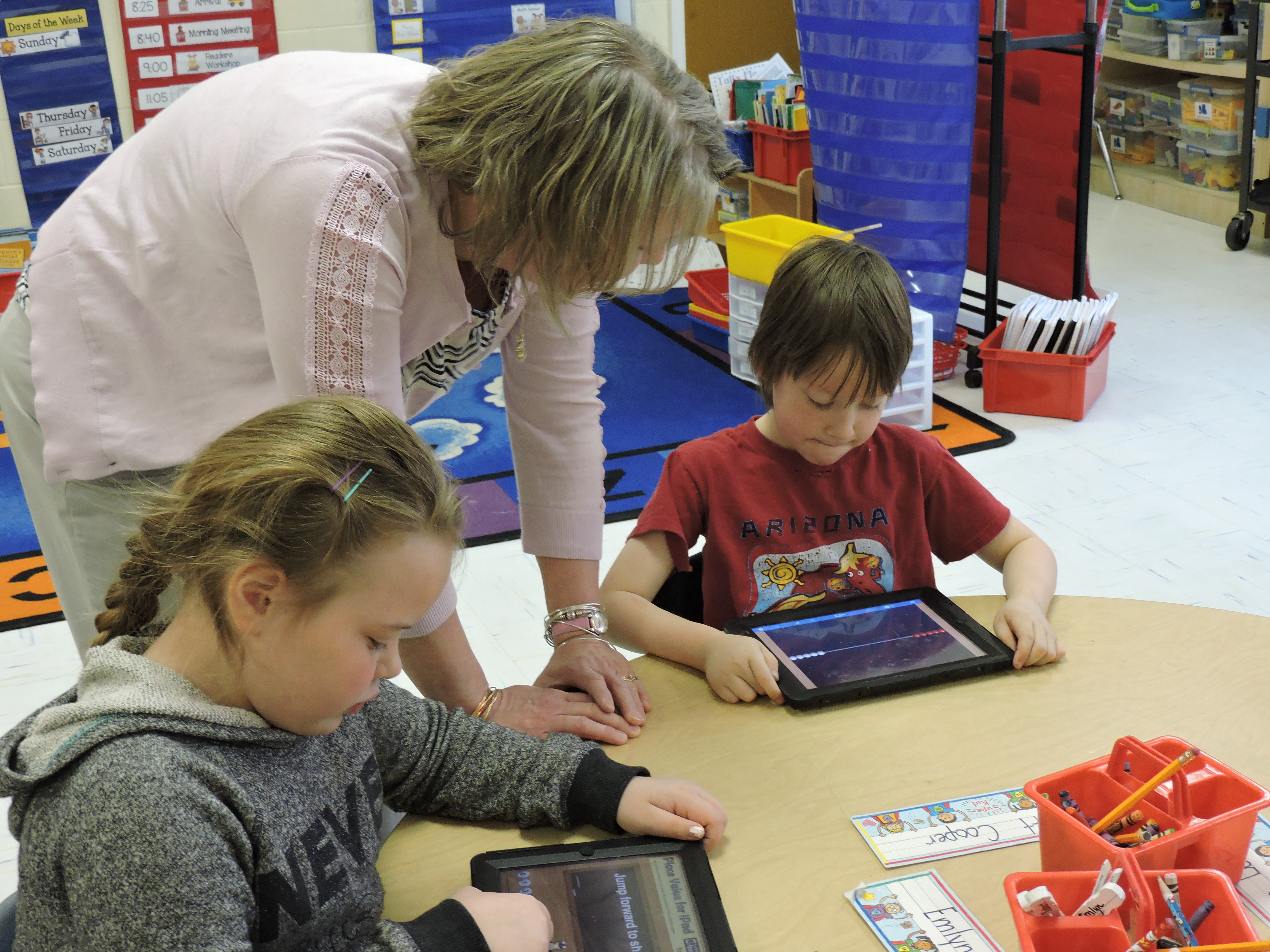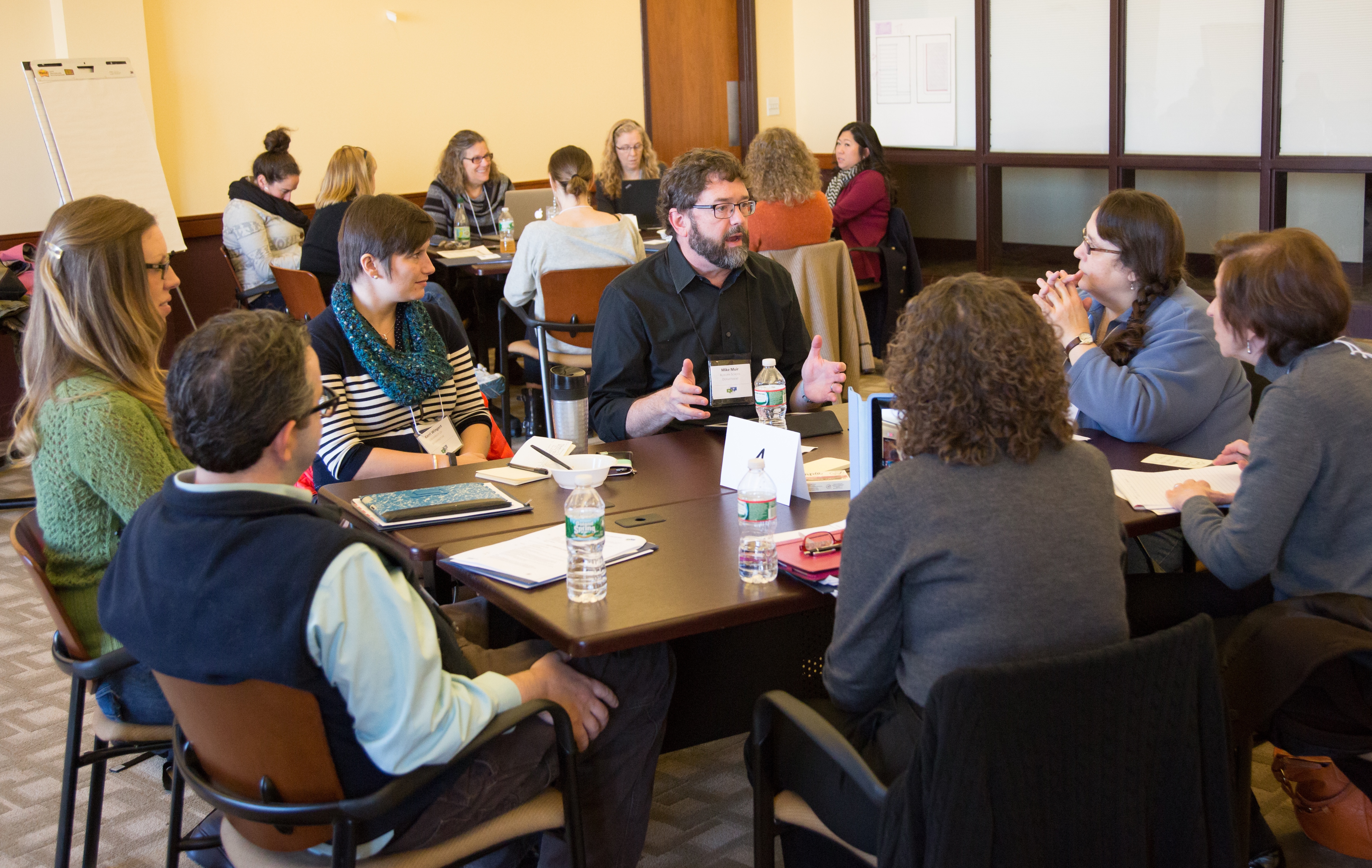R+P Voices: Maine Math Coach and Collaboratory Fellow
Contributed by Lisa Coburn, Auburn School Department
“Ongoing co-investigative approach resets an elementary teacher’s expectations about professional development and who is an ‘expert.’”
In the spring of 2014, my administrator at the time told me she had signed me up for a meeting at the district office and that it had something to do with math. I didn’t really have any other details or information about who would be there, but during that first meeting, I realized that I was a part of a cohort of K–2 teachers from a few schools in our district along with the administrators from those schools.
Joining us was Pam Buffington, who heads the Interactive STEM team at EDC for the Research + Practice Collaboratory. It was my understanding at that time that she and her colleagues would be the “researchers” in our group and would be bringing us research about best practices. I have to admit, I still wasn’t quite clear about what my role would be in all this and had no idea how it would impact me in so many ways.
“I had no idea that our actual work together would be so collaborative and…would be our own research project to be shared with others in the education field.”
My first impression had been that the researchers would be considered the “experts” and would give us, the teachers, the research. As the teacher, I would be responsible for incorporating that research into my practice. I had no idea that our actual work together would be so collaborative (I hadn’t really paid attention to the name of the project!) and that the teachers were considered “experts” as well. I was also unaware that the work we would be doing together would be our own research project to be shared with others in the education field.
We began our work by identifying the needs of our students in mathematics. We then worked together to determine how we might best meet those needs. The information brought to us during our monthly meetings was based on the most current research. My district has had a major focus on providing professional development for teachers in the area of literacy, but I admit that I had not had the same level of professional development in math. I did participate in some professional development over the years, but it was typically a one-day conference with no follow-up. The difference with my work with the Collaboratory is that the professional development has been ongoing and very interactive. Not only did the researchers bring us the research—on learning progressions, pedagogy, brain development—but we went that next step to actually applying the research in an authentic situation and reflecting on how the strategy actually worked. We did this work through a co-investigative model.
A main focus of our work was to use technology in a strategic way to support children in using mathematical practices, such as explaining their thinking, showing their work, and using tools appropriately. As a teacher, I would meet with a researcher, and we would determine how to use the common strategy with iPad tools that the group was exploring as well as other strategies that we had discussed during our monthly group meetings. We would identify our goals and possible outcomes. Having that time to reflect with others helped me improve as an educator. I also gained a better understanding of the learning progression and the best practices to move children along that progression.
I have also been very fortunate to be a part of an Inquiry Group with fellow teachers as well as researchers around the country examining how interactive technologies are being used in classrooms and sharing work we have been doing through the Collaboratory. The group first met during the Leveraging Learning conference in 2014, where I met many amazing people, including Cathy Fosnot, whose Young Mathematicians at Work is one of the first books we read in this project. I was able to attend one of her conferences in Connecticut, which really deepened my understanding of the work we had been doing.
Another critical connection I made through the RPC project is Shannon Larsen, assistant professor of elementary mathematics and education at the University of Maine at Farmington. Shannon was the researcher I worked with most closely through the co-investigative model. She now leads the Maine Mathematics Coaching Program at Farmington. I was accepted to the program in 2015 and have been able to work with Shannon to deepen my understanding of mathematics not only as an educator but also now as a coach to help inspire other educators.
One of the most inspiring events in my work with the RPC project was being awarded a Collaboratory Fellowship to attend the 2016 National Council of Supervisors of Mathematics conference in San Francisco in April. Being able to attend sessions presented by Jo Boaler, Marilyn Burns, Lucy West, and many others has had such a huge impact on my understanding of mathematics and the research that supports best practices. I was able to make more great connections, and I am now following so many experts in this field through Facebook and Twitter.
Participating in the Collaboratory has had a huge impact on my teaching. I have grown as an educator, and my role within my district has changed. Because of my work with the project and a School Improvement Grant for my school, my role within my district has changed from educator to mathematics coach. I am so inspired to keep learning and enjoy bringing new information to the people I work with. So many pieces of our work will continue in our district. As a coach, I now use a similar co-investigative model with my teachers that has been very successful. I am also seeing the shift in the way teachers are thinking about how to teach math, and the most inspiring aspect is seeing children excited about math!
Tag(s): Mathematics, Interactive Technology







